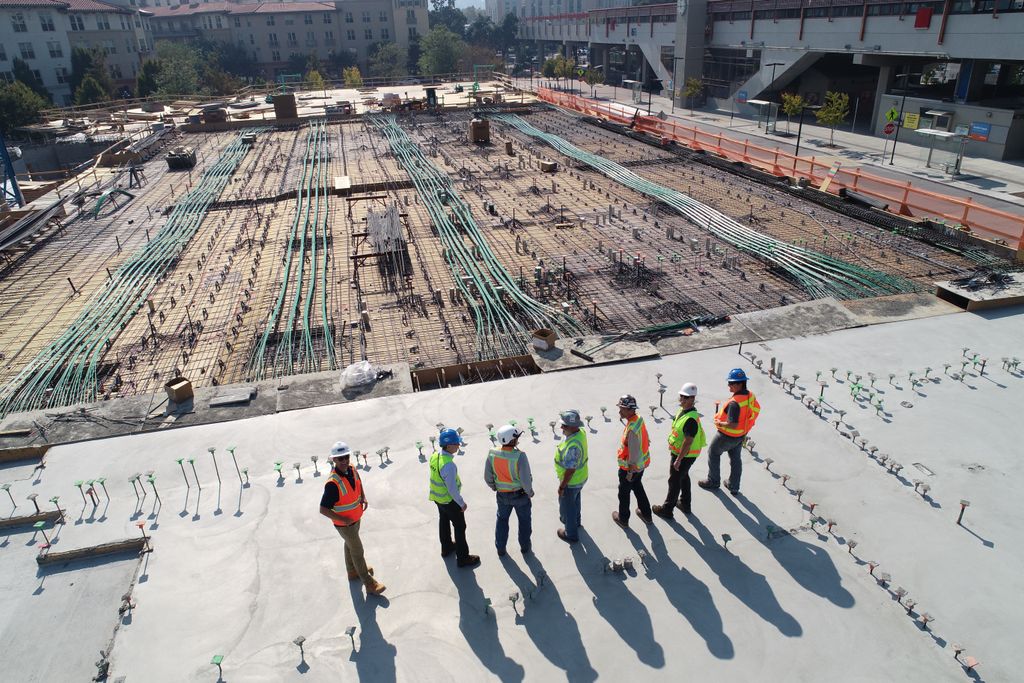Construction loan defaults can be a significant challenge for investors, as they can result in the loss of substantial investments. However, there are strategies that can be employed to recover lost investments in such situations. This article explores the causes and impact of construction loan defaults on investors, as well as legal remedies for recovering lost investments. It also discusses preventive measures, such as thorough due diligence and effective risk management strategies, that can help mitigate the risk of loan defaults. Additionally, it explores strategies like negotiating loan restructuring and collateral liquidation that can be employed to minimize the impact of defaults. Here are the key takeaways from this article:
Key Takeaways
- Construction loan defaults can result in the loss of substantial investments.
- Thorough due diligence and effective risk management strategies are essential for preventing loan defaults.
- Investors should be aware of the causes and impact of construction loan defaults.
- Legal remedies, such as pursuing legal action and seeking compensation, can be explored to recover lost investments.
- Strategies like loan restructuring and collateral liquidation can help mitigate the impact of defaults.
Understanding Construction Loan Defaults
Causes of Construction Loan Defaults
Construction loan defaults can occur due to a variety of factors. Lack of proper planning and inadequate risk assessment are common causes. Other factors include delays in construction, cost overruns, and changes in market conditions. It is important for investors to be aware of these potential risks and take necessary precautions.
Impact of Construction Loan Defaults on Investors
Construction loan defaults can have significant repercussions for investors. Here are some key points to consider:
-
Financial Loss: Investors may face substantial financial losses when construction loans default. This can result in a significant decrease in the value of their investments.
-
Delayed Returns: Defaults can lead to delays in receiving returns on investments. Investors may have to wait longer than anticipated to recoup their initial investment.
-
Legal Challenges: Recovering lost investments can be a complex and time-consuming process. Investors may need to navigate legal proceedings and engage in negotiations to recover their funds.
-
Risk Exposure: Defaults highlight the inherent risks associated with construction loans. Investors need to carefully assess the potential risks before investing in such projects.
-
Diversification Importance: Diversifying investment portfolios can help mitigate the impact of construction loan defaults. By spreading investments across different sectors and asset classes, investors can reduce their exposure to any single default event.
Legal Remedies for Recovering Lost Investments
When faced with construction loan defaults, investors have several legal remedies available to them. These remedies can help them recover their lost investments and minimize their financial losses. One common legal remedy is foreclosure, which allows the investor to take ownership of the property and sell it to recoup their investment. Another option is lawsuits, where investors can sue the defaulting borrower for breach of contract or other legal violations. Additionally, investors may consider negotiating a settlement with the borrower, which can involve modifying the loan terms or accepting a reduced payment amount. It’s important for investors to consult with legal professionals to determine the best course of action for their specific situation.
Preventing Construction Loan Defaults
Thorough Due Diligence
Thorough due diligence is crucial in preventing construction loan defaults. It involves conducting a comprehensive assessment of the borrower’s financial stability, project feasibility, and construction experience. This process helps identify potential risks and red flags that could lead to default. Key factors to consider during due diligence include financial statements, credit history, project timeline, and contractor qualifications.
Effective Risk Management Strategies
Implementing effective risk management strategies is crucial for preventing construction loan defaults. By identifying and assessing potential risks early on, investors can take proactive measures to mitigate them. Some key strategies include:
-
Conducting thorough due diligence: This involves conducting a comprehensive analysis of the project, including the borrower’s financial stability, the feasibility of the construction plan, and the market conditions. It is important to assess the borrower’s ability to repay the loan and the potential risks associated with the project.
-
Diversifying investments: Spreading investments across multiple projects can help reduce the impact of defaults on overall investment portfolios. By diversifying, investors can minimize the potential losses from a single default and increase the chances of recovering their investments.
-
Monitoring construction progress: Regular monitoring of the construction progress can help identify any red flags or delays that may indicate potential defaults. This allows investors to take timely actions to address the issues and prevent further losses.
-
Establishing clear communication channels: Maintaining open and transparent communication with borrowers and project stakeholders is essential for effective risk management. Regular updates and clear communication can help address any concerns or issues promptly and prevent potential defaults.
Mitigating Construction Loan Defaults
Negotiating Loan Restructuring
When faced with a construction loan default, negotiating loan restructuring can be a viable option. Flexibility is key in finding a solution that benefits both the borrower and the lender. By adjusting the loan terms, such as extending the repayment period or reducing interest rates, the borrower may be able to regain financial stability and avoid default. Additionally, the lender can mitigate potential losses by ensuring that the new terms provide adequate security and repayment guarantees.
Collateral Liquidation
Collateral liquidation is a crucial step in mitigating construction loan defaults. When a borrower fails to repay the loan, the lender may need to seize and sell the collateral to recover their investment. This process involves evaluating the value of the collateral, finding potential buyers, and conducting the sale. Efficient and strategic collateral liquidation can help lenders minimize their losses and maximize their chances of recovering the loan amount.
To ensure a successful collateral liquidation, lenders should consider the following:
- Engaging professional appraisers to accurately assess the value of the collateral.
- Working with experienced real estate agents who have a deep understanding of the local market and can attract potential buyers.
- Adhering to legal requirements and following the proper procedures for collateral seizure and sale.
By taking these steps, lenders can increase their chances of recovering their lost investments through collateral liquidation.
Mitigating Construction Loan Defaults is a crucial aspect of the construction industry. When borrowers default on their construction loans, it can have significant financial implications for lenders and developers. To avoid such defaults, it is important to implement effective risk management strategies and closely monitor the progress of construction projects. By conducting thorough due diligence before approving loans, lenders can assess the creditworthiness of borrowers and minimize the risk of defaults. Additionally, establishing clear communication channels with borrowers and promptly addressing any issues that arise during the construction process can help mitigate the likelihood of defaults. At Debt Collectors International, we specialize in providing debt collection solutions for the construction industry. Our experienced team understands the unique challenges faced by lenders and developers and can assist in recovering outstanding debts. Contact us today to learn more about how we can help you mitigate construction loan defaults.
Frequently Asked Questions
What is a construction loan default?
A construction loan default occurs when a borrower fails to meet the financial obligations of a construction loan, such as making timely payments or completing the project as agreed upon.
What are the common causes of construction loan defaults?
Common causes of construction loan defaults include inadequate project planning, cost overruns, delays in construction, and economic downturns.
How does a construction loan default impact investors?
A construction loan default can result in significant financial losses for investors, as their invested capital may be at risk and the expected returns may not be realized.
What legal remedies are available for recovering lost investments in construction loan defaults?
Legal remedies for recovering lost investments in construction loan defaults may include litigation, foreclosure, and pursuing personal guarantees or other collateral.
How can thorough due diligence help prevent construction loan defaults?
Thorough due diligence involves conducting a comprehensive analysis of the borrower’s financials, project feasibility, and market conditions to identify potential risks and mitigate them.
What are effective risk management strategies to prevent construction loan defaults?
Effective risk management strategies for preventing construction loan defaults include setting realistic loan terms, monitoring project progress, and implementing contingency plans.





